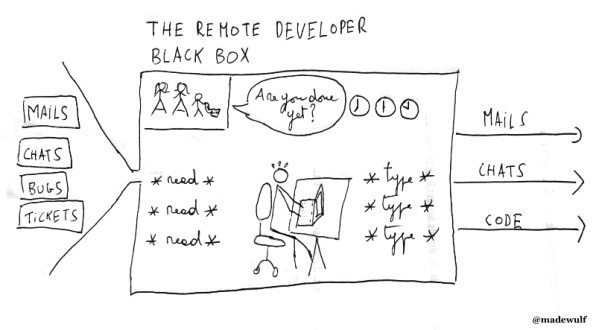#JobSearch : Top 5 Stay At Home Jobs For Moms Or Dads. Question: Would you Like to Work at Home?
Working from home is a great way to improve your work-life balance because it allows you to spend more time with your family. The average remote worker has an estimated extra five hours per week to do the things they enjoy. Those hours are recouped from commuting. According to Zippia, it takes the average American 27.6 minutes to travel to work. That makes a total of 55.2 minutes per day traveling to and from work.
While a lot of companies currently allow their employees to work from home part-time, you can acquire full-time remote work. Here are the top five stay at home jobs for moms and dads.
1. Call Center Agent
A call center agent answers calls, responds to emails, and deals with customer enquiries over webchat. Depending on the company, you will either deal with inbound calls only, or inbound and outbound calls. Employees who take both calls are referred to as, ‘blended agents.’
Median Pay: $35,389 per year
Qualifications: Typically, a high school diploma is enough to secure a call center position. But if you want to earn more money, you will need additional qualifications. However, you will receive on-the-job training.
Like this Article? Share It! You can now easily enjoy/follow/share Today our Award-Winning Articles/Blogs with Now Over 3.5 Million Growing Participates Worldwide in our various Social Media formats below:
Updated NEWS: #BestofFSCBlog – Aug23 we hit Two Milestones: #1– Hit over 1.2 million impressions on our FSC Career Blogs within 7 days on LinkedIn……. #2– Over 3.5 Million participates on our FSC Career Blog page below within three years! Both the Team/myself want to thank you all for participating! …… Chris G. & Team,www.firstsun.com
Daily FSC Career Blogs/Articles: Articles/blogs on today’s Job Search (Over 8K Daily Readers)- Go to ‘Blog Search’ & type in updated info on resumes, job search, networking, social media job search, etc.
https://www.firstsun.com/fsc-career-blog/
New- FSC LinkedIn Newsletter– Daily articles/blogs on Today’s Job Market & Seach. Subscribe Today!
https://www.linkedin.com/newsletters/fsc-linkedin-network-7081658661743308800
Connect with us on LinkedIn (under Chris G. Laughter) : https://www.linkedin.com/in/chris-g-laughter-b46389198/
Best Daily Choice: Follow the Best of FSC Career Articles/Blogs @
https://twitter.com/search?q=bestoffscblog&src=typeahead_click
Question: Searching for ‘the Best Daily Career Search Articles/Blogs on the web’ on Job Search, Resume, Advancing/Changing your Career, or simply Managing People?
Answer: Simply go to our FSC Career Blog below & Type (Jobsearch, Resume, Networking, etc) in Blog Search: https://www.firstsun.com/fsc-career-blog/
What Skill Sets Do You Have to be ‘Sharpened‘?
Did you know? First Sun Consulting, Llc (FSC) is celebrating over 32 years in delivering corporate & individual outplacement services & programs to over 1200 corporate clients in the U.S., Canada, the UK, & Mexico! Visit us @ www.firstsun.com OR Ask for a Quote for Services at info@firstsun.com
We here at FSC want to thank each of our corporate partners for the opportunity to serve & moving each of their transitioning employee(s) rapidly toward employment!
Article continued …
2. Virtual Assistant
As a virtual assistant, you are responsible for providing remote assistance to an organization, or an individual. Their duties include interacting with clients or customers, organizing data, conducting research, sorting documents, and updating calendars.
Qualifications: Virtual assistants do not need any qualifications. But, you will need to have excellent computer skills because your employer will require you to use specific programs to complete your tasks.
3. Online Tutoring
Students looking for additional help to pass their exams or get them through the school year will hire an online tutor. Online tutors work with one student at a time. What you teach them in is dependent upon your area of expertise.
Median Pay: $51,058 per year
Qualifications: The qualifications required for an online tutoring job will depend on your area of expertise and what you plan on teaching. However, you will need a GED to work on most tutoring platforms. To teach English, you will need a Teaching English as a Foreign Language (TEFL) certification.
4. Remote Software Developer
A remote software developer designs and creates systems and software programs for their employer. They also test and maintain existing programs and websites.
Median Pay: $111,000 per year
Qualifications: You don’t need a degree to become a software developer; however, you will need to know how to use programs like JavaScript, HTML, and CSS. If you are not familiar with these programs, there are courses available to teach you how to use them.
5. Data Entry Clerk
A data entry clerk is responsible for inputting, maintaining, and updating accurate information into computer systems and databases. They may also correct errors, verify data, and organize files to ensure data integrity.
Median Pay: $40,000 per year
Data Entry Clerk: You will need a high school diploma to become a data entry clerk.
How Do You Land A Great Remote Job?
The job application process for a remote job is no different than it is for an office job. Make sure your resume is up to date and start sending them out to companies who offer remote work. You will find vacancies posted on jobsites, but you can also ask friends and family if they know of any remote working opportunities.
While working from home seems ideal, it is important to understand that it is a very different dynamic to an office. You will need to create an office space, structure your day, and organize your time. Additionally, you will need an extra dose of self-discipline because there are so many distractions at home. You won’t have a manager overshadowing you, all of which make it very easy to slack off. However, if you know you can handle being self-motivated and self-reliant, working from home is extremely rewarding.
Forbes.com | February 7, 2024 | Goldie Chan





